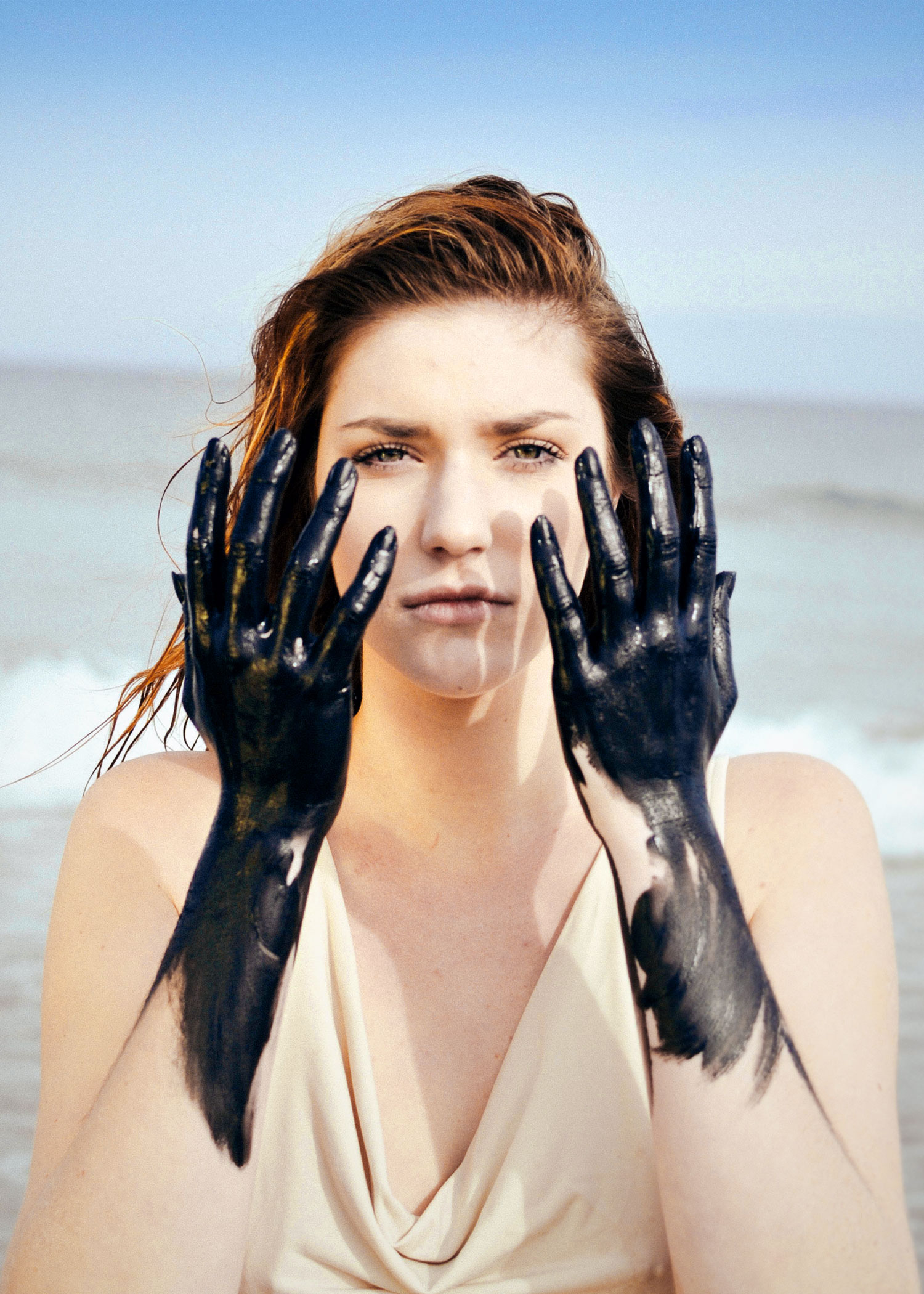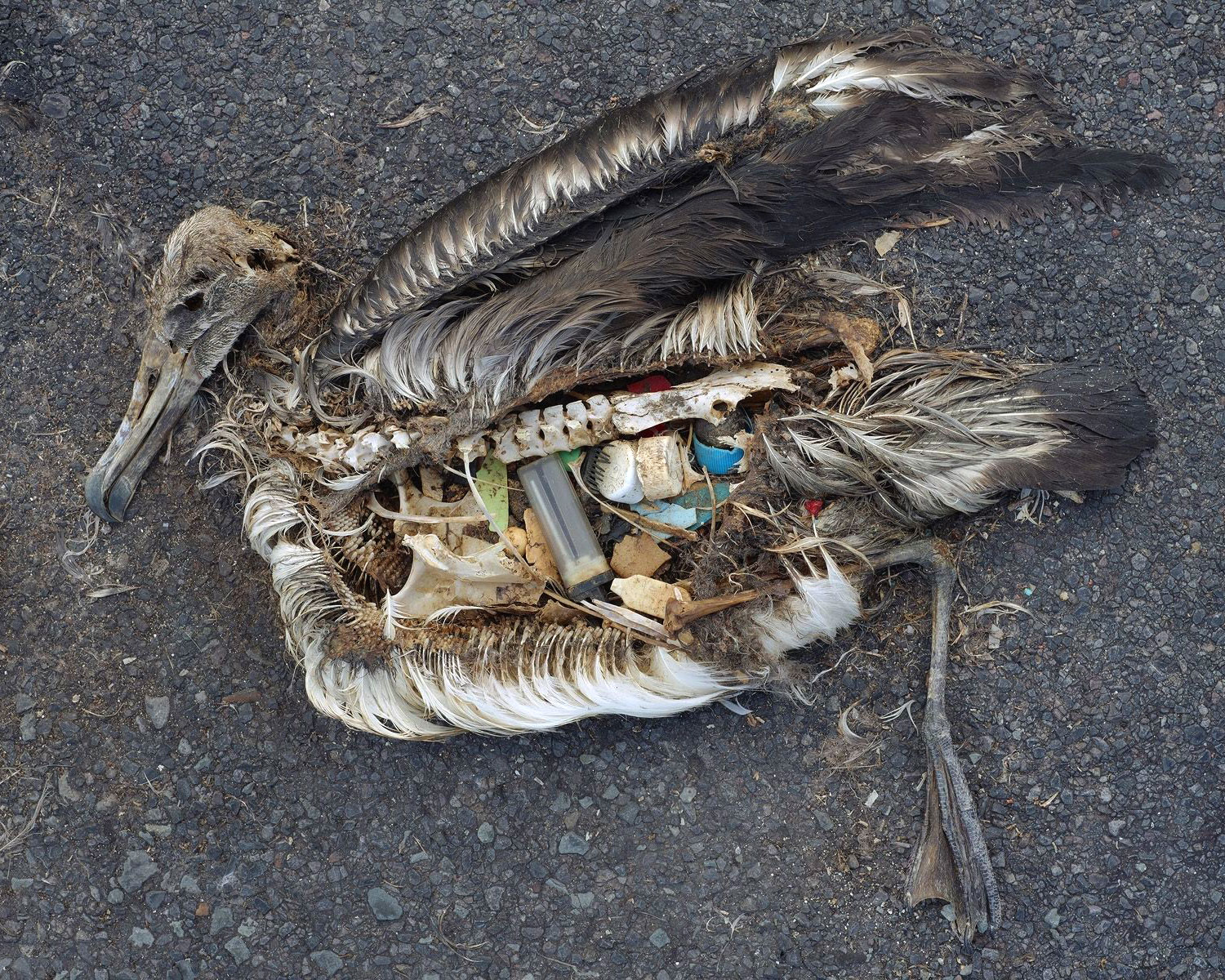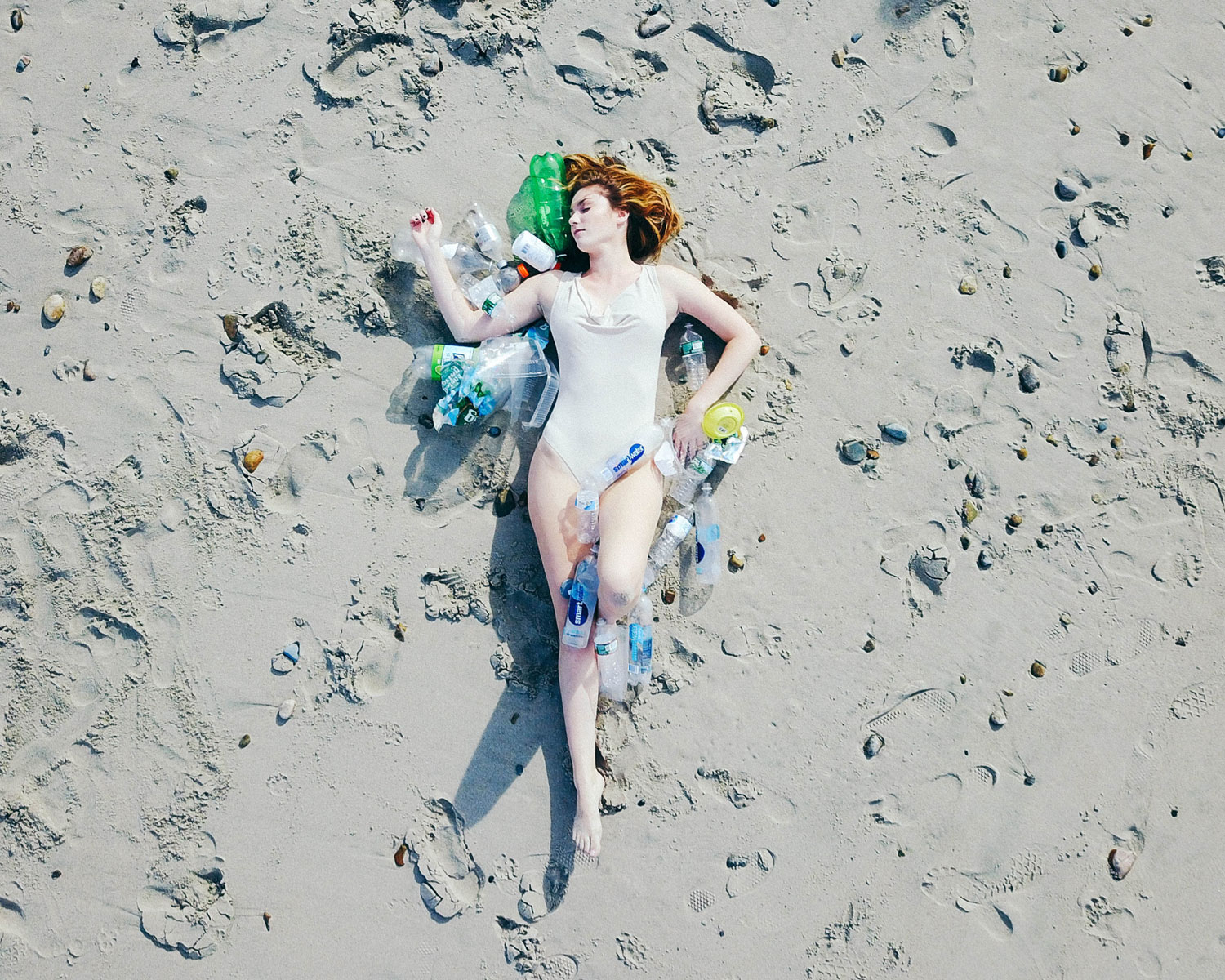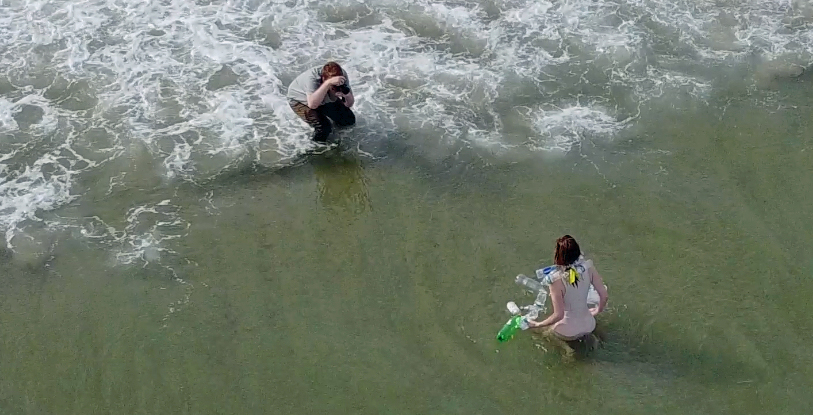No humans were harmed…
At the beach, Bouchard’s acting skills come to the forefront when Morris asks the theatre major to show the distress she imagines sea creatures would experience from ingesting plastics or choking on oil. Meanwhile Morris’ roommate, Chris Gordon, an advertising major, pilots his drone to capture bird’s-eye video footage of the scene. All three students are from the Class of 2020.
The drone buzzes overhead as Bouchard and Morris plunge into the bitterly cold water for 30-second photo sessions, warm up, and repeat.
At the end of the session, they review the photos, wrapped in warm blankets, and Bouchard says the end result is worth the interludes of discomfort.
“You could tell Christian was very passionate about this idea from the start. He had a vision, and he brought it to life,” she says. “It was great to be part of it.”







